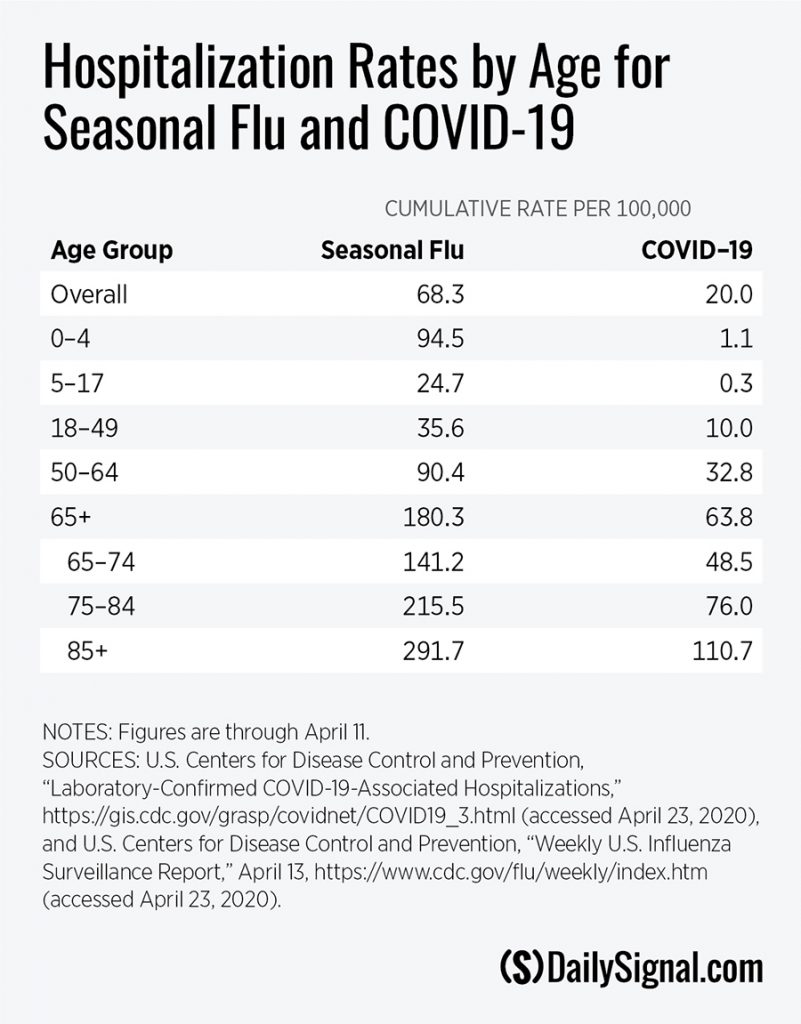“Getting back to normal can begin now in some places,” Senior Fellow Doug Badger explain in a new post with Heritage scholar Norbert Michel. “That is because the pandemic has not been evenly spread across the states or even within states.”
They challenge Dr. Anthony Fauci, the chief medical adviser to the Trump administration’s coronavirus task force, who was asked recently when the U.S. could return to normal, answering that “couldn’t occur until the public is ‘completely protected.’”
“The standard of complete protection is at once noble and unattainable,” Badger and Michel write in Keeping Our Distance in the New Normal of Coronavirus for The Daily Signal. “Neither the U.S. nor any government ever has completely protected its citizens from contagion.”
They also discuss the “economic carnage” being caused in most highly developed countries by social distancing. The problem now: “It’s never clear when it’s safe to return to normal.”
“Tragically, tens of thousands still die from the seasonal flu because it is impossible to completely protect the population—from influenza, COVID-19, or any other natural disaster. It would be foolish to ignore the measures that can protect us, but it also is unrealistic to think that we can protect everyone from getting sick,” they write.
“The Centers for Disease Control and Prevention reports that nearly 61 million Americans were infected in 2009, the last time a novel virus (in that case, H1N1) reached pandemic proportions…The 2017-18 flu strain was especially virulent, claiming 61,000 lives.”
Aggressive social distancing doesn’t end the pandemic but only elongates the curve, causing “the wave of infection to rise more slowly, peak at a lower level, and trace a long downward slope. And once people do start back to work, a new wave of infections can crest.”
COVID-19 has hit New York and New Jersey especially hard, but “Three-fourths of all counties in the U.S. have no more than 50 cases, half of all counties have 10 or fewer cases, and almost 40% have five or fewer.”
Health officials now will have to convince Americans to return to “some sort of normality,” even though the infection continues to spread. “But convincing Americans to return to work and play when a risk of contagion remains is much easier than aiming to ‘completely protect the population,’” Badger and Michel conclude.
Protecting the Vulnerable: In the meantime, many others, particularly the most vulnerable, are facing their own health crisis: They are not getting needed treatments because they fear getting exposed to the virus if they go to hospitals and their doctor’s offices to get care.

In a new Forbes post, I focus on Medicare beneficiaries needing access to infused or injected drugs that generally must be administered by clinicians in doctors’ offices or hospitals. These drugs, which treat everything from cancer to lupus to osteoporosis and multiple sclerosis, can’t be self-administered at home.
Countless patients are blocked from access either because their doctor’s office is closed or is limiting services or because many hospitals have shut down access to treatments not related to COVID-19. Even when medical facilities are open, patients can be fearful about going in for treatment and risking exposure, I explain in Crucial Access To Injected And Infused Medications Needed For Medicare Patients.
Dr. Andrea Singer of MedStar Georgetown University Hospital in Washington D.C., told us she estimates that up to 75% of her patients needing their next dose of osteoporosis treatment will have trouble getting it, placing them at increased risk for bone fractures. Facilities like hers that are open are taking extraordinary precautions to keep patients safe, but patients are still reluctant to come in despite these added safety procedures.
Sen. Tim Scott, R-SC, is leading a bi-partisan effort, with Sen. Mark Warner D-VA, to bring attention to the problem and encourage CMS to relax rules to facilitate access.
A letter he is circulating to colleagues argues “it is vital that we act now to ensure that all Americans, particularly those at highest risk of severe illness from COVID-19, can receive the care and medications that they need in the safest possible setting. For a growing number of beneficiaries, that setting is the home.”
They are urging HHS Secretary Alex Azar and CMS Administrator Seema Verma to expand existing guidance that allows telemedicine visits and some home treatment to also allow, with doctor’s orders, patients to receive in-home infusion and injection therapy that can be provided and billed to Medicare by home health or other home care service agencies.
This will allow continuity of care in the safest environment during the coronavirus public health crisis and is an important policy choice that CMS should implement so these vulnerable seniors can get needed care.

